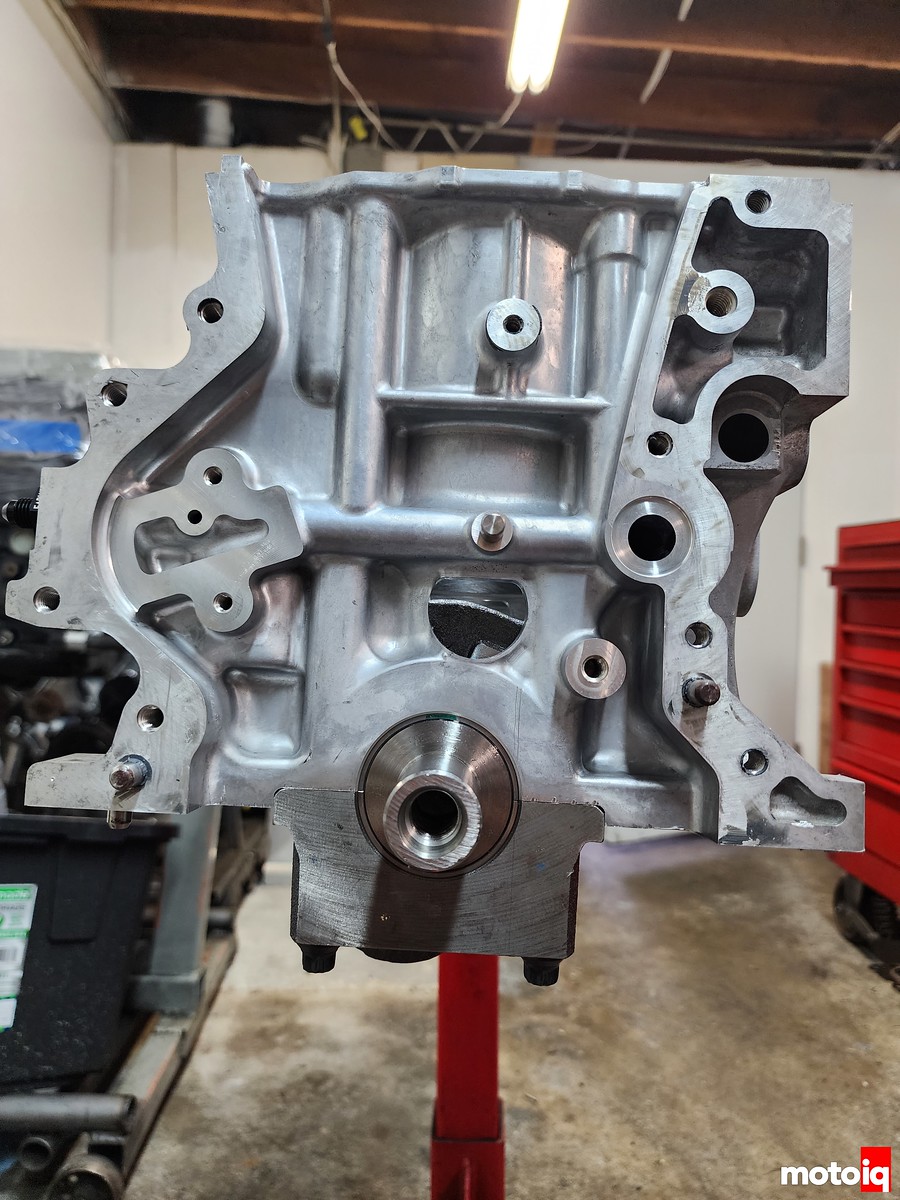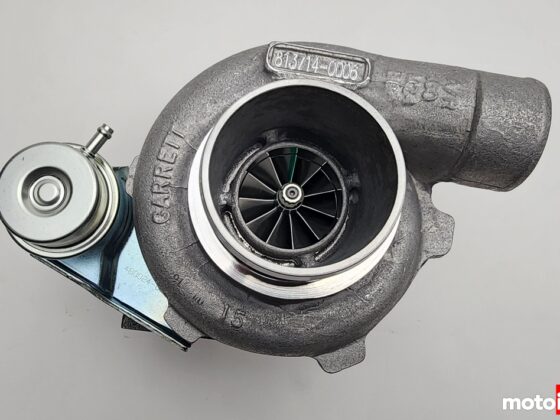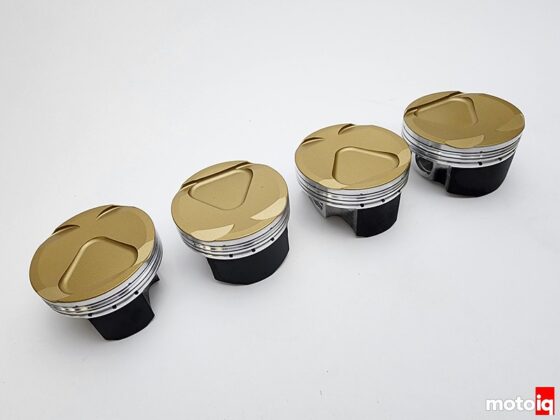
In our last story of our saga of turbocharging the MR20DD, we looked at the engine’s external features to see how they would be would be suitable for building a turbo system. Despite some odd features, like the siamese exhaust ports, we didn’t see anything that would make the engine totally unsuitable for turbocharging. With that, we proceeded to disassemble the engine to see how the engine internals looked.
First, we took off the oil pan where we found this assembly with balance shafts. We are not fans of balance shafts, as they spin at 2X the engine speed. They whip up the oil, heating and aerating it. They suck up about 5-10 hp and really don’t make an engine that much smoother. When building an engine we normally remove them as they do not have anything to do with attenuating the engine’s torsional or reciprocating imbalance, they just counteract a 4-cylinder engine’s up-and-down shaking moment. In the case of the MR20DD the balance shafts drive the oil pump, so we are not going to be able to easily remove them. Perhaps in later development we can, but not for now. On a positive note, the oil pump is large and seems like it will have good volume capability.

Turning our attention to the engine’s bottom end we were disappointed to find that the main caps were tiny and unsupported. This isn’t going to hold a ton of power and our dreams of pumping an easy 500 hp out of this engine ended right here. Remember that this engine isn’t designed for this and a stiffening bottom-end girdle can rob as much as 10 hp by adding windage losses. Reducing mileage eating friction at the intended target power was probably a compelling reason to not add excessive reinforcement.
On a positive note, the Turbocharged MR16DDT engine found in the Juke has a very similar bottom end and people have modded them to make almost 400 whp for street-driven cars. However, we cannot see this MR20DD lasting very long under hard use in its current form at a higher power level.
For right now, this bottom-end arrangement will have to do. If the budget was higher and if we had significantly more time available, we would align bore the block and drill the main caps for larger ARP studs. We would also come up with some sort of main cap reinforcement. Possibly a girdle tying all the caps together with the oil pan rails. For now, we will just keep our power targets and RPM limits lower.

Here is a look at the entire bottom end. The main cap bolts are pretty small and we will replace them with brand-new OEM bolts when reassembling the engine. The crank is partially counterweighted. For performance use we prefer full counterweighted cranks, but some performance potential was probably sacrificed to keep the reciprocating mass low.




7 comments
I wouldnt´t worry too much about the unsupported main caps.
AMG M139 and BMW B58 have 2-bolt main caps without any girdles and they do just fine with one being the highest specific power 4-cyl ever made and the other being capable of 1000hp with bolt-ons.
Tiny main bolts ar a drawback though.
Interestingly the bore/stroke numbers (84/90.1) are also quite similar to the AMG 83/92 and BMW 82/94.6.
That goes with my understanding that a small cylinder bore with a long stroke almost always lends itself well to turbocharging. In part due to faster burn time.
Have you looked towards the MR16DDT oil pump assembly? No balance shafts and looks to be a straight swap to the MR20DD block. Also the MR16DDT comes with a girdle, which I’m sure with some machining would fit the MR20DD.
It’s not just the matter of two bolts, it’s the flimseyness of the caps and the register area of the caps. Due to the compressed time we didn’t investigate the Juke gridle but my thinking is it probably helps if it is adaptable. We just didnt have the time to have studs made and then machine and align bore the block.
Mike, you mentioned tight timeframe – is this a SEMA project? Doesn’t make any difference to me one way or the other, just curious.
stick around and find out!
Will do!
Very cool to see all this tech in a lowly Sentra. Subaru, why can’t you even do this on your “sport” engines?
I like how the piston pins are already showing slightly concerning wear patterns even at stock power level and not much mileage. I thought the connecting rods would be the real main underbuilt parts of the bottom end, but nope, turns out the whole bottom end is underbuilt. Oh, Nissan.